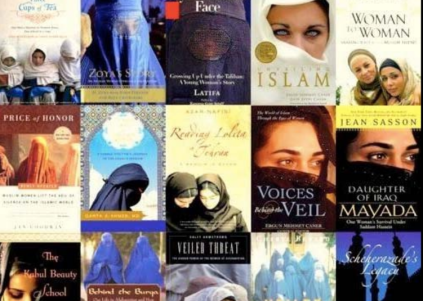It was last November that Adam Talib gave his talk about “Translating for Bigots,” and this May that Africa is a Country wrote about “The Dangers of a Single Book Cover.” There is a lot more to be said about how Arabic literature (in translation) is jacketed, and how this packaging affects how we experience books:
It’s not only six-year-old children whoprefer the taste of foods that are packaged with licensed cartoon characters; adults also perceive a difference in the taste of potato chips depending on the colors on the bag. Although it seems that similar studies haven’t been done on dust jackets, surely it’s a small leap to believe that the outside of a book affects, at least in some way, how we perceive the contents.
That’s the theme — briefly discussed — of my opinion piece in this week’s Abu Dhabi-based The National, which opens with some advice from Kenyan author Binyavanga Wainaina: “Never have a picture of a well-adjusted African on the cover of your book[.]“
Wainaina gave this “advice” nearly a decade ago, in his influential “How to Write about Africa.” Although the essay has been widely shared and imitated since it was first published in 2005 — for instance Sarah Carr’s “Guide to Writing about Egypt” — from the look of contemporary book jackets, it seems many failed to read the work as satire.
Wainaina suggests publishers should, in lieu of a well-adjusted African, use “an AK-47, prominent ribs, naked breasts[.]” But unfortunately, these tropes — and others — aren’t limited to the sorts of books he so deftly excoriates. As I note in the essay, “they’re also used to promote great African and Middle Eastern literature, including much of Arabic literature in translation. More importantly, these covers aren’t just an annoyance: They shift the way we read books.”
As I note, book jackets are often a practice of mimicry. One trope becomes successful — “Tiny Men” or “Women Looking Out Over Water” — and soon many others in the same genre crowd in to reach the same readers. Unfortunately, the “Saving Muslim Women” cover, which seems to have originated with that genre of book, is also the same one used to package many serious works of Arabic literature in translation.
Lila Abu-Lughod writes in Do Muslim Women Need Saving? that these books were “published by trade presses, reviewed widely, and adopted by book clubs and women’s reading groups, a lurid genre of writing on abused women – mostly Muslim [which] exploded onto the scene in the 1990s and took off after September 11.”
Meanwhile, serious Arabic literature was all but invisible in English translation for most of the 20th century. When a few titles did appear in the 1980s, they were often slapped down by unreceptive critics. Nonetheless, Arabic literature in translation did grow slowly in the 1990s and, like the novels Abu-Lughod discusses, grew even more after September 2001.
In what looks like an attempt to piggyback on success, publishers of serious translations have recycled the tropes from the “saving Muslim women” covers.
Click HERE to read more



Be the first to comment